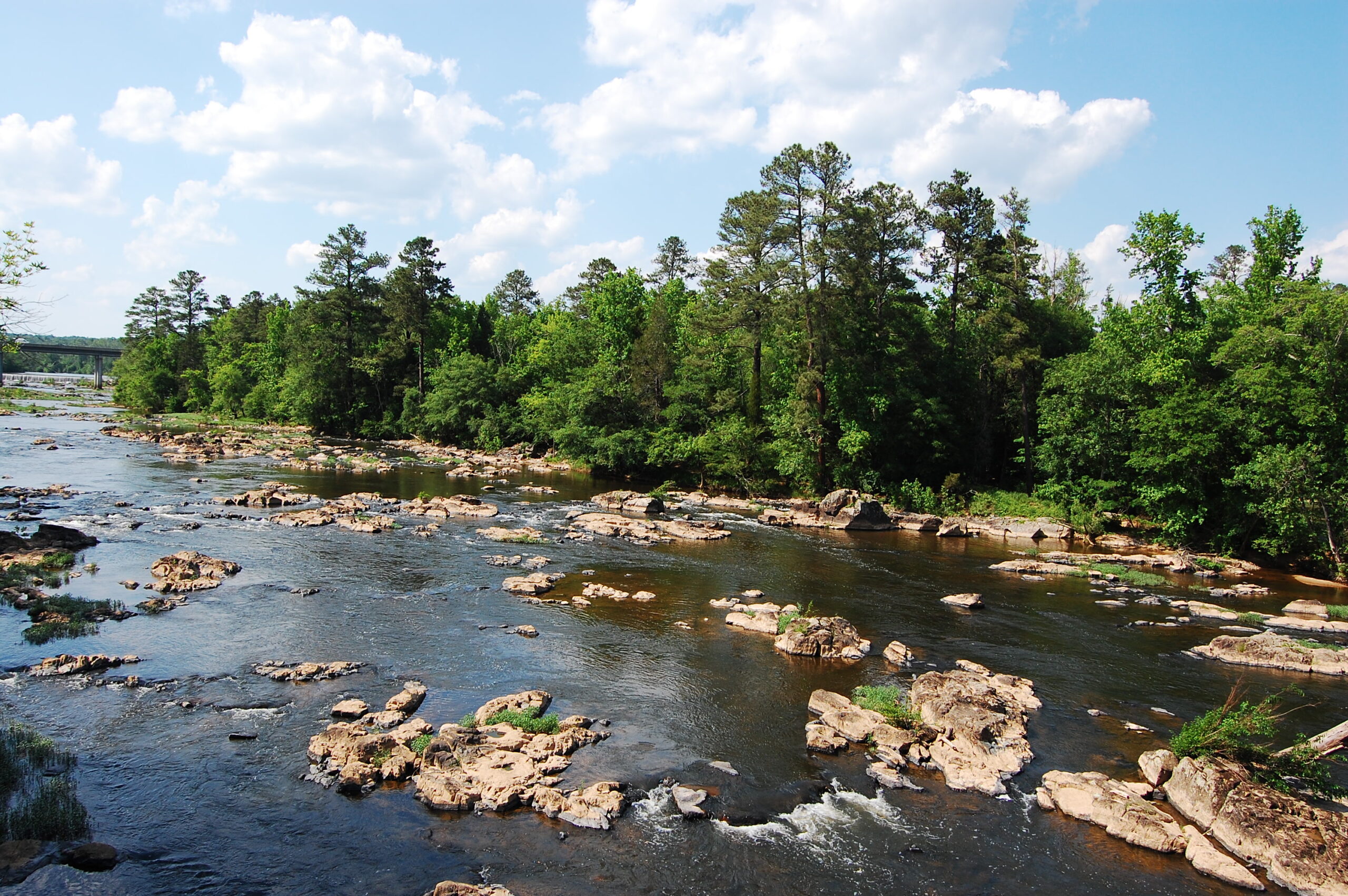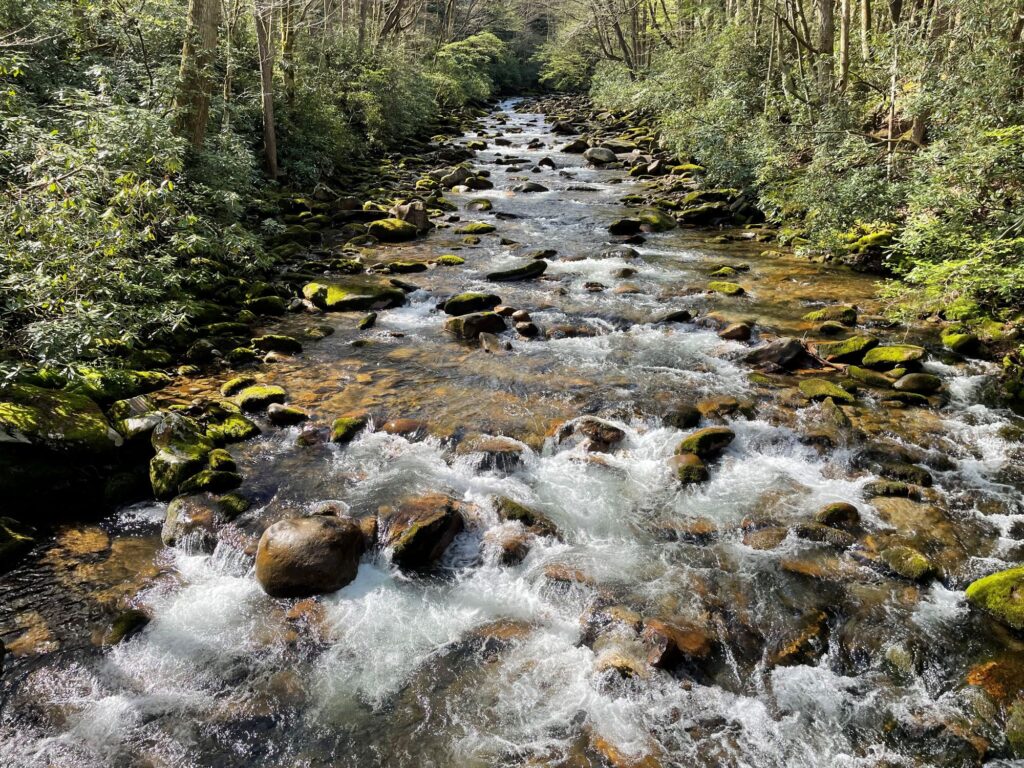HAW RIVER

The Haw River flows 110 miles from its headwaters in the north-central Piedmont region of North Carolina to the Cape Fear River just below Jordan Lake Reservoir. The river and its watershed provide drinking water to nearly one million people living in and around the cities of Greensboro, Burlington, Chapel Hill, Cary, and Durham. This 1700 square mile watershed is home to a variety of fish and wildlife, including blue heron, bald eagle, beaver, deer, otter, largemouth and smallmouth bass, bowfin, crappie, carp, and bluegill. The Haw also contains important habitat for the endangered Cape Fear shiner and an assortment of rare freshwater mussel species.
Local residents appreciate the Haw for its outdoor recreational opportunities, including hiking, paddling, swimming, fishing, and picnicking, as well as the solitude and quiet the river offers. The Haw River is the most popular whitewater paddling river in the North Carolina Piedmont Region, and Jordan Lake (a 14,000 acre reservoir) provides recreation for about 1 million visitors a year for boating, swimming, camping, and fishing.
The Backstory
The Haw River has been the victim of death by a million cuts. Millions of gallons of wastewater and polluted runoff (i.e., rainwater that picks up pollution as it flows over roads and parking lots) have washed into the Haw. Population growth since the 1960s has overwhelmed the systems put in place to protect clean water. Aging pipes and infrastructure result in raw sewage spills and the increased development has made flooding worse and added pollution to the rivers across the watershed. This pollution has caused large algal blooms in backwaters along the river and is a major contributor to the problems that inflict Jordan Lake Reservoir, a major drinking water reservoir near the end of the watershed, impacting the health of people and the ecosystem that depends on it. In 2014, American Rivers listed the Haw River as a Most Endangered River to highlight the problems that the river faced.
There are dozens of small dams in the watershed. They had powered the initial industrial revolution in the watershed and have primarily fallen into disrepair and have been abandoned by their owners. These dams fragment rivers, devastate fisheries and disrupt natural river functions. They also create a significant hazard to communities as the pools behind them create inviting places to swim but the hydraulics in front of them will suck a person in and likely drown them.
The Future
The Haw River has caught the attention of the community around it- with places like Saxapahaw centering much of their community and economic growth on the health of the river. North Carolina has developed a clean-up plan for the problems seen in the Jordan Lake Reservoir but that plan has not been able to be fully implemented and missed the opportunity to engage the entire watershed and bring the values of a healthy river system to all the communities in the watershed.
In 2015, American Rivers led the development of a new approach to managing water in the Haw River. This new approach was based on the principles of Integrated Water Management or One Water that looks to find the value in all water (stormwater, drinking water, reclaimed water, wastewater, etc.) This creates management efficiencies that save money and reduce regulatory burden while producing more ecological benefits.

Let's stay in touch!
We’re hard at work in the Southeast for rivers and clean water. Sign up to get the most important news affecting your water and rivers delivered right to your inbox.
The Jordan Lake One Water (JLOW) initiative was launched in 2017. It brought together communities from across the watershed from Greensboro to Cary and interest groups from across the spectrum include other environmental advocates, Farm Bureau, NC Home Builders, and private businesses. The group is working to eliminate the silos dividing the work that each of the groups is doing and finding new partnerships and greater investment in strategies that restore the ecological health- and therefore the economic health- of the watershed. This system will invest in projects and develop policies that build resilience in the watershed to climate change including the impacts from flooding and droughts, builds community stability and opportunity, reduces pollution of all sorts going into the streams across the watershed, and restores the ecosystem of the watershed.
This attention to the river has also helped to encourage a greater interest in recreation and reconnecting the river by removing the antiquated dams that dot it. We’ve removed several remnant dams- the Upper Swepsonville dam and the Granite Mill dam– to restore the river. We hope to work with more communities and dam owners to find the long-term sustainable restoration solutions for many of the remaining dams in the system.


